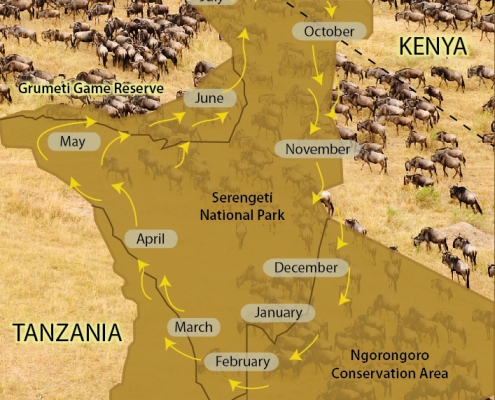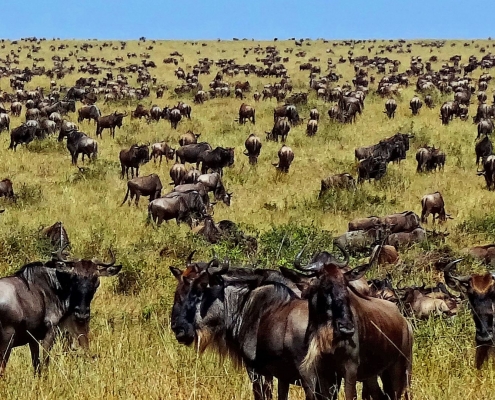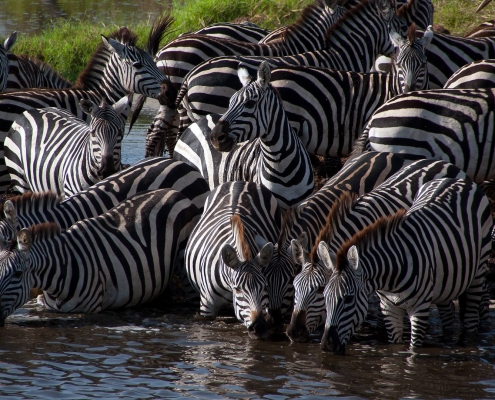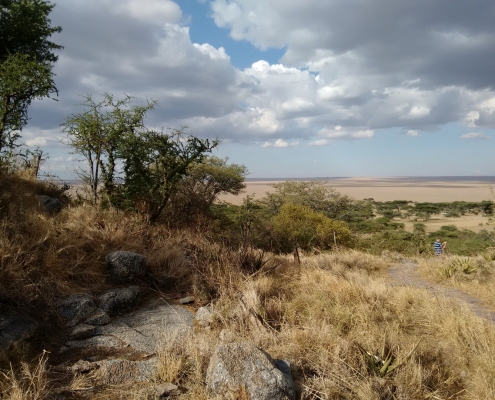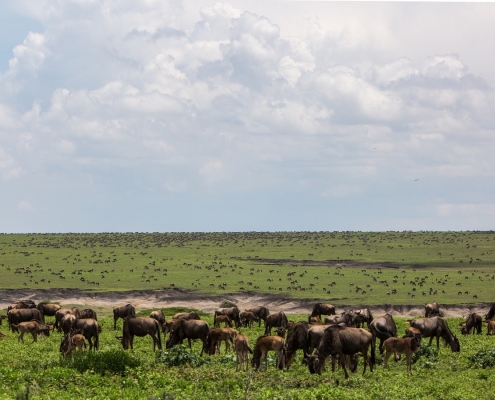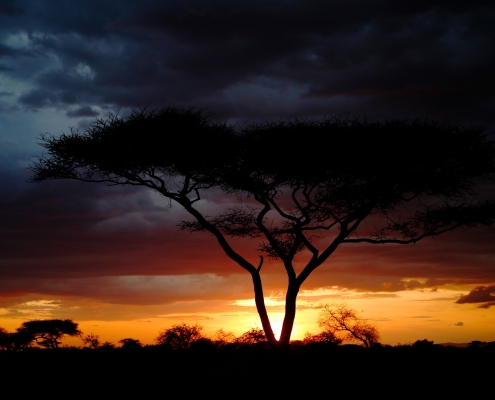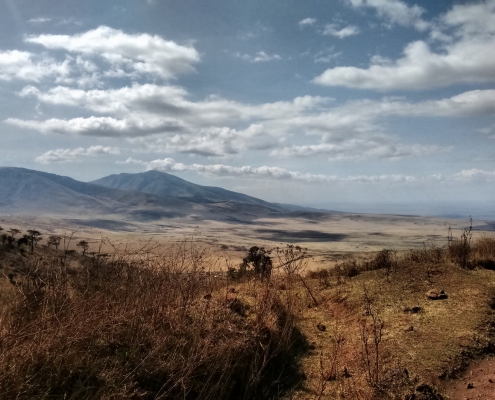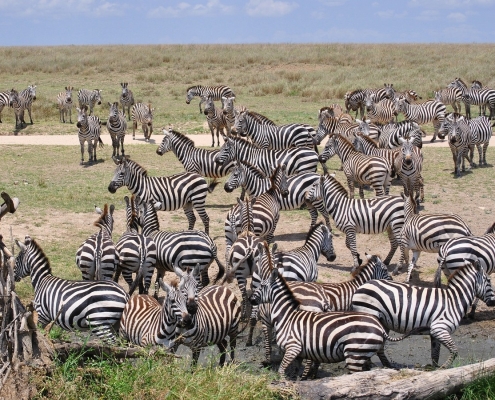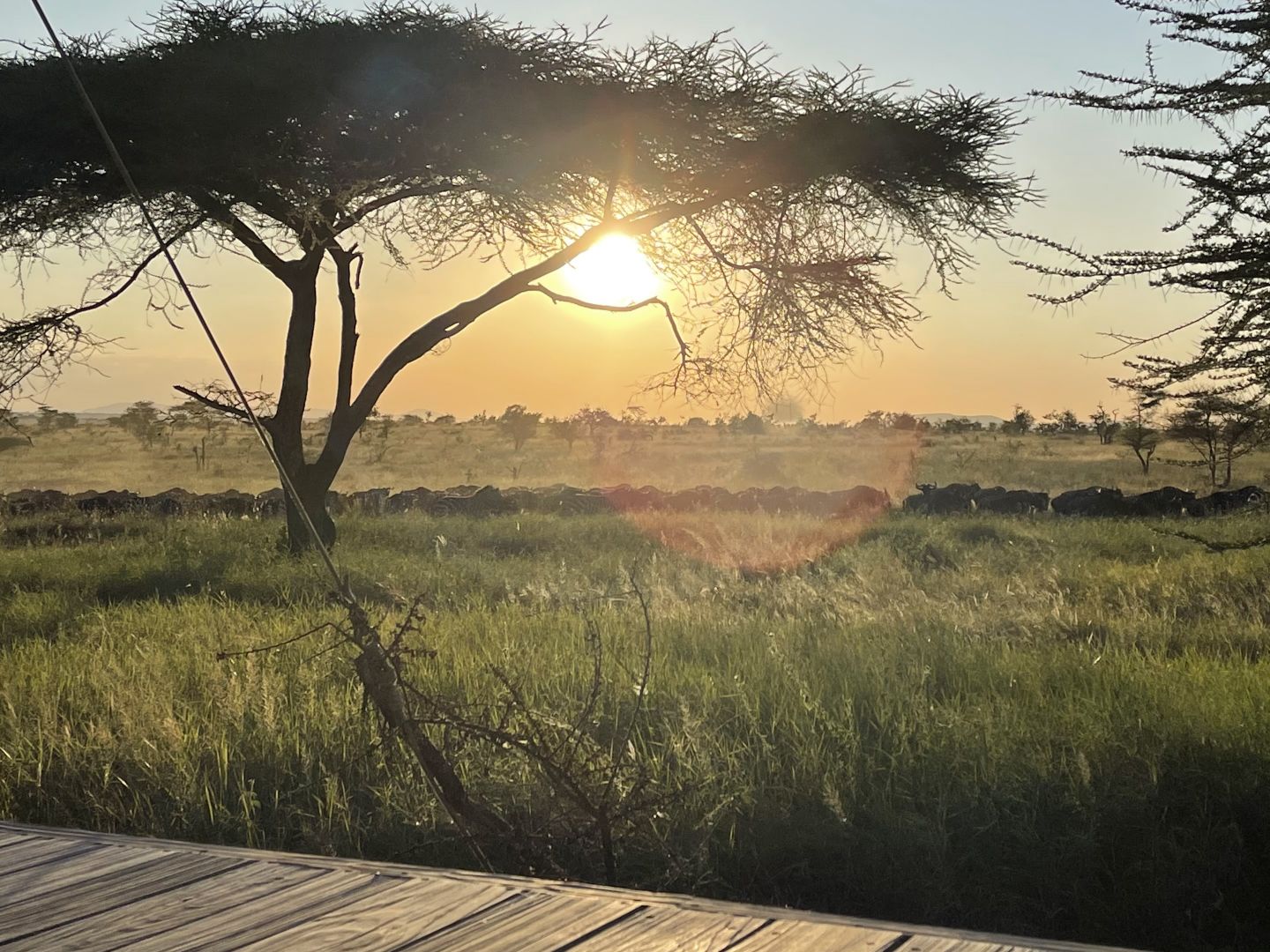Great Migration in Tanzania
Brief overview
One of the most spectacular things nature has to offer and the basis for many nature TV documentaries – during this annual migration in the Serengeti Mara ecosystem, more than 1.3 million wildebeests roam the endless plains in search of fertile green pastures. The antelopes are joined by other animals such as zebras, Grant’s gazelle, Thompson’s gazelle, eland and impala. Together they form the largest migration of land mammals in the world.
The picture on the left shows the route of the main herd. If the many smaller herds were included, almost half of the map would be filled up. The map should therefore only be used as a guide. No one can predict the exact routes of the animals. For example, unusual rainfall can dramatically shift the cycle geographically as well as chronological. This ecosystem is not a zoo, but wild nature – we are honest about this when talking to our safari guests. Our company director is a nature conservationist.
The best chances are given to travellers who spend several days in the parks / conservation areas. As mentioned before, there is not a single huge group of animals – instead the different herds are spread over huge areas. The Serengeti never empties, you can always observe different animals all year round in this world famous national park. Some guests even deliberately avoid the park areas with the large herds in order to experience this World Heritage Site almost completely alone and away from other Safari groups.
Details
This annual animal migration cycle usually begins in February / March in the southern part of the Serengeti (near the Ngorongoro Conservation Area). This is the time of year when the wildebeests give birth to about 500,000 calves in a very short period of about 3 weeks. When the rainy season ends in May, the animals move northwest to the areas around the Grumeti and Mara rivers. At the beginning of July the herds start their river crossings – this is where the famous pictures of countless documentary films are shot – huge numbers of animals trying to reach the other side of the river safely through a narrow crossing with crocodiles and other predators waiting for their fair share of the huge feast. In July / August the grazing animals reach the northern part of this 30.000 km² large ecosystem, known as Masai Mara. In this Kenyan part of the Serengeti ecosystem the herds stay until the end of the dry season. With the beginning of the short rains in early November they move south. More than 250,000 wildebeests die during this annual migration, either from exhaustion, hunger, thirst or predators. As a key species, these animals are extremely important for the entire ecosystem. Not only do they provide food for many famous predators such as lions, cheetahs, leopards and hyenas, but also for the “garbage collectors”, scavengers like the African white-backed vulture. With their excrement they spread nitrogenous fertilizer, which is essential for the green pastures of the next year.
Wildebeests have no designated leaders, which is why the grazers often split up and move in different directions. Sometimes some herds tend to stay longer in certain areas than others. Due to the irregular rainfall, the annual “migration schedule” can change significantly. It should be remembered that the great migration is a much slower process than many people think. By the way, it is also not possible to follow the herds or book lodges or campsites nearby. All accommodation in the park must be booked in advance according to the park administration.
The famous crossing of the rivers Mara and Grumeti is the most difficult part of the Great Migration to predict. The wildebeests crossing takes about 1 to 2 weeks and can happen any time within a period of two months. If this is very important for your safari, we recommend arriving in July and staying as far north as possible in the Serengeti. However, you should remember that game viewing in Tanzania is excellent all year round. Not only because there are many herds, but especially because exciting game drives depend primarily on the experience and knowledge of your guide. At Tanzania Experts all drivers/guides are personally selected by our company director.
Photos:
© Tanzania Experts, Great Migration map from tanzaniatourism.go.tz
The Great Migration in Tanzania monthly overview:
January
The trek takes place in the southeastern Serengeti on the short grass plains after the short rains that have provided fresh grass. January and December are the main months for the birth of zebras.
February
The grass plains are the main food source for around two million wildebeest, zebra and gazelles. Predators lurk nearby, feeding on the helpless newborn. This is the main month for wildebeest calving.
March
Beginning of the long and heavy rainfalls. Clouds, which increase in intensity, appear from the south and occasional lightning flashes illuminate the night sky. The pastures of the short grass plains are almost exhausted and the newborns have to keep up with the herds.
April
In this month it rains the most. The wildebeests are scattered almost everywhere on the short grass plains.
May
Good food is still available, but water is becoming scarce. Now the huge herds are beginning to unite with hundreds of thousands of animals stretching over many kilometres.
June
The rain is ending and the herds leave the plains and cross the Grumeti River, where every year many wildebeests provide a feast for the crocodiles.
July
The animals of the great migration now head northwest and leave the park for a short time, with a small part of the herd heading towards the Lobo area. The morning temperatures are now falling sharply.
August
The animal migration and the constantly present predators now cross the Ikorongo area. The different branches of migration are beginning to meet. The migration in a normal year should now take place in the northern Serengeti and the Maasai Mara. It is still cold in the morning.
September
The trek has now reached Kenya’s Maasai Mara Game Reserve, located beyond the northern border of the Serengeti. Temperatures are rising and the sky is without clouds most of the time.
October
This is the driest month in the Serengeti. Most of the animals stay for a short time in the Masai Mara Game Reserve, where there is always plenty of water and better grazing for the lowland animals at this time of year.
November
With the upcoming short rain the animals go back to the Serengeti to start a new cycle. Many trees begin to bloom and migratory birds arrive.
December
The migration trek accelerates towards the southern plains of the Serengeti, where the short rains allow fresh grass growth. The zebras begin to give birth.


